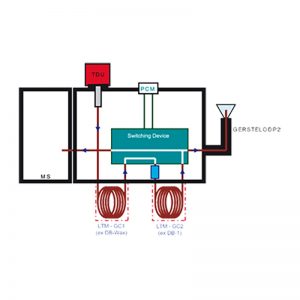To perform chromatographic analysis of real-world samples, analysts often must deal with either complex sample types such as essential oils and petroleum fractions, or complex matrices like biological fluids, foods, sludge, or polymers. Once the sample has been prepared for analysis, resolution of all the individual compounds present by means of a single chromatographic separation can be challenging due to the different ranges of polarity, boiling point, solubility, MW,
and concentration of the components. It is therefore desirable to use innovative yet robust techniques that allow resolution of as many types of compounds as possible.
Coupling columns having different polarities can signifi cantly enhance the resolution of complex samples. This approach is commonly known as multidimensional gas chromatography. In this study, we coupled two low thermal mass (LTM) GC column modules (GERSTEL-MACH) with dissimilar column phases using a valveless, software-controlled column switching device for heartcutting GC-GC. The GERSTEL-MACH has a resistive heating system rather than a convection oven which allows for rapid heating and cooling rates. In addition, the column modules can be independently programmed for optimal separation and minimum analysis time.
Examples of complex flavor and fragrance samples separated using the above system show that heartcutting fractions from the first column and transferring them to the second column provided better identification of more compounds than conventional single-dimension GC analysis.
This system was also used to identify trace components responsible for off-odors in headspace samples from polymers by coupling an olfactometry detector to the powerful heartcutting technique. Two main advantages of the instrumental confi guration used were the simple, robust design and short analysis times.



